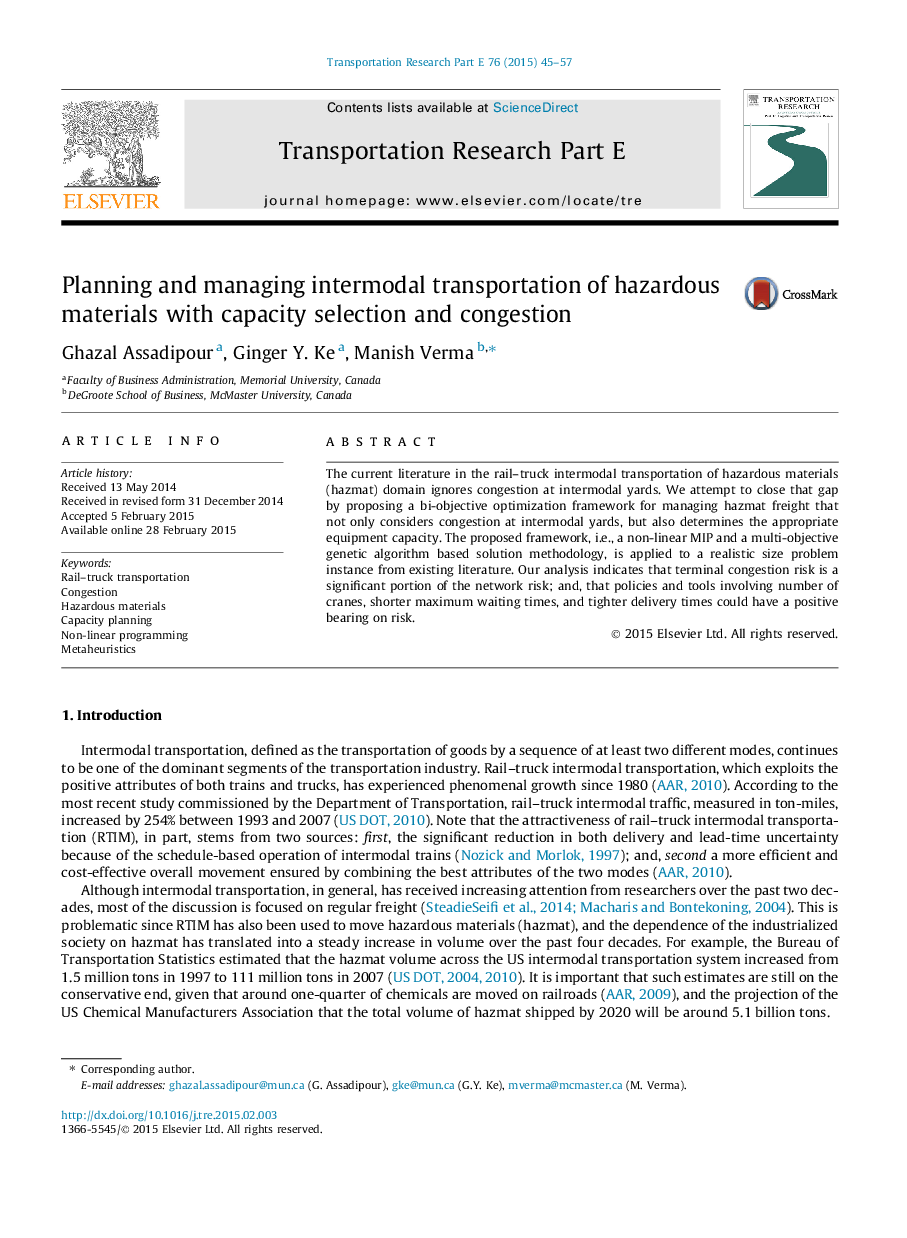| کد مقاله | کد نشریه | سال انتشار | مقاله انگلیسی | نسخه تمام متن |
|---|---|---|---|---|
| 1023178 | 1483014 | 2015 | 13 صفحه PDF | دانلود رایگان |
چکیده
کلید واژه ها
1.مقدمه
2- بیان مساله
شکل 1- هدف کاهش هزینه کلی و همچنین ریسک عمومی کلی مرتبط با حمل و نقل چند وجهی مواد خطرناک است
3- چارچوب بهینه سازی
1-3 فرمول مدل
2-3 تخمین پارامترهای مدل
1-2-3 هزینه
2-2-3 ریسک
3.3 متدلوژی راه حل
شکل 2: خلاصهای از اکتشاف-RTIM
شکل 3: کدگذاری و کروموزوم
شکل 4. تقاطع
شکل 5: جهش
4. آزمایشات محاسباتی
4.1 راه حل و بحث
جدول 1: راه حل مورد پایه
جدول 2 ظرفیت و ازدحام در ترمینالها
جدول 3 : معاوضه ریسک-هزینه
4.2 بینشهای مدیریتی
4.2.1 معاوضه ریسک-هزینه
شکل 6: راه حلهای مبتنی بر وزن
4.2.2 فاکتورهای تاثیر گذار بر ریسک ازدحام
4.2.2.1 نرخ استفاده
4.2.2.2 زمان تحویل
4.2.2.3 زمان انتظار
جدول 4 ترمینال ترانزیت نورفولک
4.2.3 تغییر در سطح تقاضا
جدول 5: تاثیر بر تغییر در تقاضا
جدول 6: اسنپ شاتی از راه حل
4.2.4 کاربردهای عملیاتی و تاکتیکی
5. نتیجه گیری
• We study rail–truck intermodal transportation of hazmat with terminal congestion.
• A nonlinear optimization model and a customized RTIM-heuristic are proposed.
• Congestion at terminals could result in non-negligible hazmat risk.
• Equipment service and utilization rates have a direct bearing on congestion risk.
• Shorter delivery times would have a positive bearing on terminal risk.
The current literature in the rail–truck intermodal transportation of hazardous materials (hazmat) domain ignores congestion at intermodal yards. We attempt to close that gap by proposing a bi-objective optimization framework for managing hazmat freight that not only considers congestion at intermodal yards, but also determines the appropriate equipment capacity. The proposed framework, i.e., a non-linear MIP and a multi-objective genetic algorithm based solution methodology, is applied to a realistic size problem instance from existing literature. Our analysis indicates that terminal congestion risk is a significant portion of the network risk; and, that policies and tools involving number of cranes, shorter maximum waiting times, and tighter delivery times could have a positive bearing on risk.
Journal: Transportation Research Part E: Logistics and Transportation Review - Volume 76, April 2015, Pages 45–57
